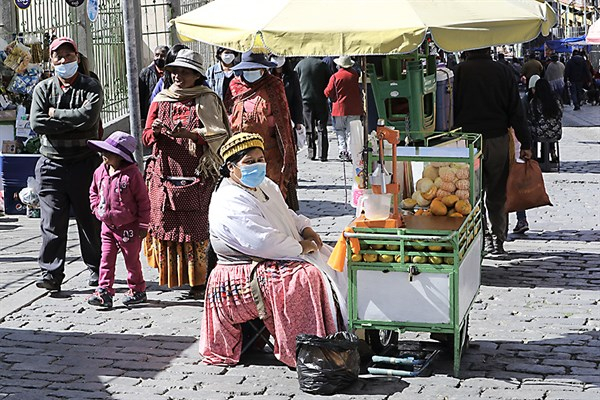
In Peru there are about 5.5 million businesses or productive units operating informally; That is, they are not registered with the National Superintendence of Customs and Tax Administration (Sunat). Within that group, 42% consider formalization not necessary, reported the Institute of Economy and Business Development (IEDEP) of the Lima Chamber of Commerce (CCL).
Although the number of informal businesses in the country shows a slight drop of 0.3% compared to 2022, according to the IEDEP analysis, based on the 2023 National Household Survey of the INEI, the figure is far from 10 % compared to 2019, which is higher. This translates into a stagnation of evolution, explained by the contraction of GDP in 2023.
Some of the reasons why informality is maintained are the size and production of the business, as well as its frequency. According to the survey, 27% stated that their business is small or produces very little, while 7% indicated that it is a temporary activity. It is important to highlight that 81% of these do not keep accounts of their activities, the 19% that do do so only through notes.
Likewise, of the total productive units counted at the national level, 36.3% have been in operation for between one and five years, while 21.7% have been in operation for less than a year. Meanwhile, 42% have already been operating for more than five years.
Women lead informal businesses
Of the universe of informal businesses, it is known that 52% are led by women, surpassing the 48% participation that men have leading this type of companies, according to the IEDEP. Furthermore, it is highlighted that those who run the reins of these productive units are mainly people between 30 and 60 years old (66%), followed by young people under 30 years old with 18% and older adults with 16%.
This difference starts because women are forced to give up hours of formal work or paid work to dedicate themselves to something that is not paid, which is housework and raising children, and what is appropriate to that pace of work. life is informal business. This is evident in the year-on-year informal employment rate where women participate in 73.6%, while men participate in 69.2%, according to the latest INEI report.
“The results indicate that these businesses are largely intended to satisfy the needs of the elderly population with a household in charge, while another part may be ventures of young people who are at the age of taking risks or, in other cases, older adults. that possibly their business is the only means of support they have to live,” said Óscar Chávez, head of the IEDEP of the CCL.
In that line, 57.6% stated that the decision to start an informal business was driven by economic needs15.8% did it because they wanted to earn a higher income, 15.3% because they wanted to be independent and the remaining 11% for other reasons.
In relation to the way they operate, it stands out that 37% of informal businesses are located inside a home, 22% in a vehicle and 16% would correspond to the number of street vendors. This goes hand in hand with the type of property in which the productive units operate, since 62% own the spaces they use, 18% rent and 15% indicate that they have borrowed those work spaces.
Lima concentrates the majority of informal productive units
The presence of informal businesses is mainly centered in Lima, thus accounting for 33% of the total. They are followed at a distance by Piura (8%), La Libertad (6.5%), Lambayeque (5%), Loreto (4.7%) and Arequipa (4.3%). However, Chávez maintained that, if compared with the number of informal and formal productive units, the proportion is 9 to 1 in Apurímac, Loreto, Ucayali, Tumbes, Puno, Piura and Huánuco; That is, almost all businesses in these departments are outside the radar of regulations and taxes.
Regarding the sectors, commerce brings together 33%, followed by transportation and storage (23.1%), accommodation and restaurants (12.3%) and manufacturing (10.3%). Among these activities are almost 80% of all businesses in informality.
Source: Larepublica
Alia is a professional author and journalist, working at 247 news agency. She writes on various topics from economy news to general interest pieces, providing readers with relevant and informative content. With years of experience, she brings a unique perspective and in-depth analysis to her work.












